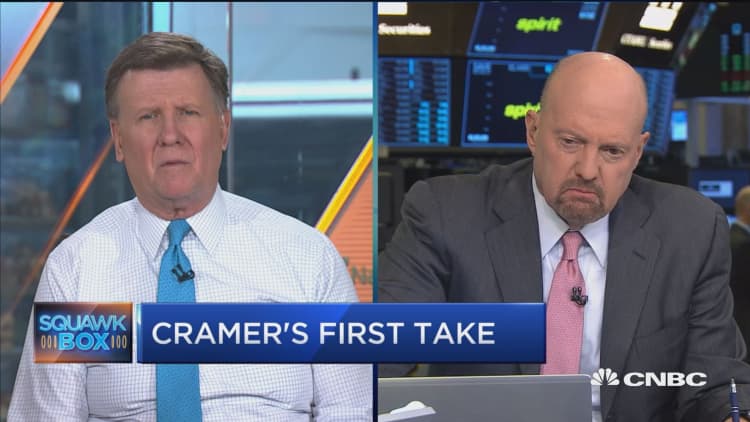
The Federal Reserve hiking interest rates aggressively and the U.S. not reaching a trade deal with China could be the catalysts that spur an economic recession, CNBC's Jim Cramer contended Monday.
Cramer doesn't see a recession, at least anytime soon. But when asked by CNBC's Joe Kernen on "Squawk Box" what would cause the next recession, Cramer responded with, "Three [Fed] tightenings and no trade agreement."
Cramer spoke as the list of economists and business elite predicting a downturn grows. The latest call was from Nobel Prize-winning economist Paul Krugman, who told the World Government Summit in Dubai, United Arab Emirates, on Sunday that there's a decent chance the global economy is headed for a recession this year.
Economists see on average a 25 percent chance of a recession within the next 12 months, according to a Wall Street Journal survey released last month, the highest level since October 2011 and up from just 13 percent last year.
U.S. stocks opened higher Monday, sparked in part by hopes for a China trade deal as talks resume this week. Axios reported that President Donald Trump's advisors have informally discussed holding a summit with Chinese President Xi Jinping next month at Mar-a-Lago, Trump's private club in Florida.
The market had been under serious pressure since early October in part on trade concerns and that the Fed would be more aggressive on rate hikes. Stocks in December plunged in their worst Christmas Eve trading ever, with the sinking 2.7 percent and slipping into a bear market, defined as a decline in an index or asset of 20 percent or more from recent highs
Since the Dec. 24 close, however, the S&P 500 has rallied nearly 15.2 percent through Friday's close.



